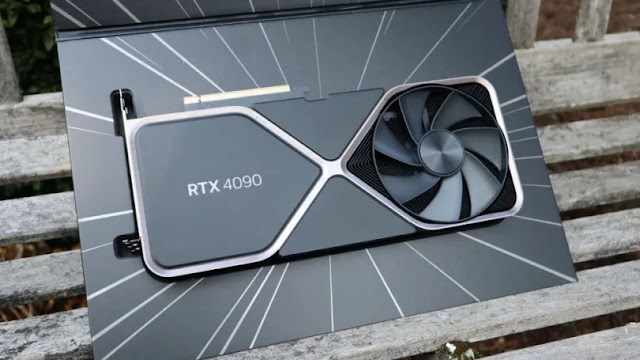The biggest thing about GPUs in 2021 was that you simply couldn't get them without paying scalper-inflated charges on eBay or learning to traverse a tangle of stock-tracking websites or Discords.
The good news is that the inventory situation improved significantly in 2022. A bitcoin meltdown and a decline in PC gross sales reduced demand for GPUs, making them less valuable to scalpers and thereby improving the inventory situation. It is now possible to go to a web-based store and acquire a number of GPUs at a price that is at least close to their original list value.
In addition, we saw a slew of new GPU debuts in 2022. The year began with the release of 1080p-focused, overpriced graphics cards like Nvidia's RTX 3050 and AMD's inspiringly awful RX 6500 XT. However, by the end of the year, we had Nvidia's extremely expensive but massively effective RTX 4090 and RTX 4080 playing cards, AMD's less-monstrous but nonetheless aggressive RX 7900 series, and Intel's problematic but price-conscious Arc A770 and A750 playing cards.
The bad news is that the repercussions of GPU shortages continue to linger, mostly in the form of higher prices. We can hope that these will be removed by 2023, but there is currently little evidence of this happening.
GPUs in finance are in a terrible situation.
If you're looking for main, better-than-integrated efficiency in older and lower-end video games that you'll primarily play at or underneath 1080p, GPUs at and beneath $200 are nevertheless available.
However, efficiency has moved relatively slowly in this class during the previous three or four years. Nvidia looks pleased to service this low-end segment of the gaming industry with the same GeForce GTX 1650 GPU it released in 2019, a card that has stubbornly remained in the $150-to-$200 price range despite its age. Within the last year, AMD and Intel have both released new cards for the sub-$200 market, and these cards can typically outperform the GTX 1650's efficiency. However, these cards are also defective in certain difficult-to-ignore ways.
AMD's RX 6500 XT was designed as a laptop GPU for desktops, so it supports fewer displays than different GPUs in the RX 6000 sequence, it lacks hardware video encoding assist, and its efficiency in older PCI Specific 3.0-capable PCs is poor because it only provides 4 lanes of PCIe bandwidth in the first place. The Arc A380 from Intel provides good video encoding help (including for the AV1 video codec), but its drivers are difficult around the edges, and performance in older video games may be patchy.
If superior GPUs like Nvidia's RTX 3050 series and AMD's RX 6600 series drop into the $200-and-under range shortly, we'll feel a lot better about the position of finances GPUs (the RX 6600 is coming horrible close, with prices falling into the $220-250 vary for various models depending on the sale). These GPUs still have drawbacks, such as average ray-tracing performance and a more hit-or-miss experience at resolutions higher than 1080p, but it's time to put the GTX 1650 in the rearview mirror.
The new normal price range for one of the finest GPUs is $1,000 and Higher
Shifting to the opposite end of the market, GPUs with four-digit price tags have been mostly ignored by common people. Halo products like as Nvidia's Titan GPUs performed admirably, but why spend so much when lesser xx80 and xx70-series GPUs can provide a significant portion of same performance for a fraction of the price?
The tale of this technology's midrange playing cards has yet to be told, but to date, the high-end playing cards in the RTX 4000 and RX 7000 series have been listed for significantly more than their predecessors. The $1,200 RTX 4080 is a significant increase above the $700 Nvidia first advertised for the RTX 3080 and 2080. If the newly renamed 4070 Ti launches at $900, as is now speculated (and was previously planned, when it was billed to as the "RTX 4080 12GB"), that will be a significant increase above the $500-to-$600 launch pricing of cards such as the RTX 2070, RTX 3070, and RTX 3070 Ti.
All of these prices are exacerbated by the fact that RTX 4080 and 4090 graphics playing cards are no longer available at launch MSRPs.
On AMD's aspect, issues appear somewhat less exorbitant, with the top-tier RX 7900 XTX priced at the same $999 as the previous-top-tier generation's RX 6900 XT. Whereas the 6900 XT was joined by an RX 6800 XT that provided many of the same benefits for $649, the 7900 XTX's younger sister is a $899 RX 7900 XT that provides far less performance-per-dollar than the XTX. Both cards continue to beat Nvidia's price for the RTX 4000 series, but this is due to how expensive the 4090 and 4080 are rather than the value AMD is providing.
Nvidia CEO Jensen Huang noted that these additional costs are here to stay, owing to the increasing expenses associated with designing and producing these GPUs. Clearly, Huang will not be an objective spectator in this case—he has a clear interest in keeping GPU prices high, especially given Nvidia's financial difficulties. However, there is some truth to what he is saying: cutting-edge manufacturing processes are expensive, Nvidia is competing with AMD, Apple, and other chip designers for TSMC's manufacturing capability, and massive monolithic chips like the RTX 4000 GPUs will have lower yields than smaller, less-complex processor dies.






0 Comments